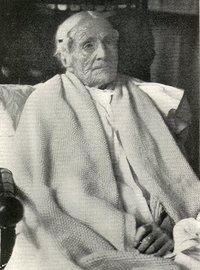Chanel Precision Ultra Correction Lip Restructuring Anti-Wrinkle Lip Contour ($50; chanel.com) has Centella Saiatica, a plant extract that helps restore lip contours.
Kiehl's Powerful-Strength Line-Reducing Concentrate ($55; kiehls.com) bottles the highest percentage of effective vitamin C available to help make skin visibly smoother.
Biotherm Biofirm Lift Skin Lifting and Firming Treatment ($45; biothermusa.com) packs Bio-Elastide to lift sagging areas.
La Prairie Anti-Aging Complex ($195; at Saks Fifth Avenue stores) uses vitamin K and retinol to help stimulate production of the skin-firming tissue collagen.
Olay Regenerist Targeted Tone Enhancer ($19; at drugstores) includes Pro-Retinol, a form of vitamin A, to help reduce the appearance of age spots.
Prevage Anti-Aging Treatment ($150; at department stores) contains ldebenone, a potent antioxidant that protects skin against sun damage and premature aging.
Nivea Visage Multiple Results Eye Creme ($15; at drugstores) contains creatine, an amino acid that may help prevent the early signs of aging.
RELATED ARTICLE: how to turn back time
* ASSESS YOUR LIFE. Diet, lifestyle and even stress can affect how quickly your skin shows the signs of age. Skin-care habits are another component; pair them with a healthy overall way of living to really lift sagging skin.
* KNOW YOUR SKIN. Understand your needs and long-term goals before you buy anything. If you only want to minimize fine lines, you don't need a product for lifting or firming skin.
* DON'T OVERDOSE! If you want to use more than one product, do it sensibly: Exfoliate first, then apply a serum or gel, and finally slather on a rich moisturizer (aging skin is drier than a youthful complexion).
* GIVE IT A REST. Don't expect to see a difference overnight; it takes at least two weeks for an anti-aging product to have a visible effect on your skin.
* DON'T FORGET SPF! Sun exposure ages your skin by breaking down collagen and elastin fibers. Apply protection diligently every day via a traditional sunscreen or a moisturizer or foundation with SPF.
this month's must-have
L'Oreal Paris Wrinkle De-Crease Collagen Filler ($20; at drugstores) boasts the botanical boswellia, collagen and manganese.
COPYRIGHT 2006 Weider Publications
COPYRIGHT 2006 Gale Group



